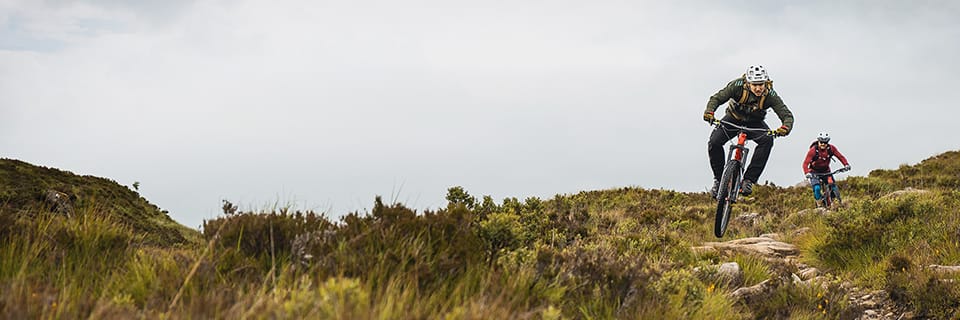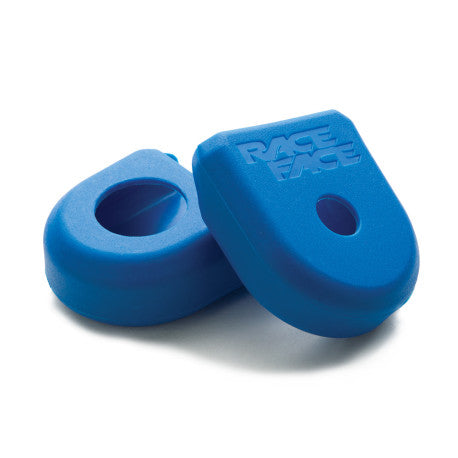Today, there are solutions that are as discreet as they are effective, to protect your bike from scratches, gravel and stone projections, and more generally from impacts that could compromise not only its aesthetics but also its sturdiness.
From protection protect your bike's life and resale value. They also make maintenance easier.
Bicycle protection features
- Types of protection : rigid, flexible, adhesive
- Parts to be protected : frame, chainstays, crankset, seatpost, valves, fork
ALL YOU NEED TO KNOW ABOUT BICYCLE PROTECTORS
Types of protections
Rigid
Mainly intended for mountain bike frames, rigid protectors form a solid bulwark against stones and other impacts. They are usually attached by adjustable clamps.
Flexible
They are made from a variety of materials, such as neoprene or plastic, and are suitable for different uses, depending on the model, but always primarily in MOUNTAIN BIKING.
Adhesives
Many protections today take the form of transparent adhesive strips. Extremely thin and discreet, they are just as suitable for protecting mountain bikes as they are for road or city bikes. They are sometimes designed for a specific bike model, or can be cut from a roll as required. Some ready-to-install kits contain parts of various shapes and sizes.
They're easy to fit and last a long time, even if humidity and UV rays mean they have to be replaced from time to time. Above all, they offer aesthetic protection against scratches, but the thickest models offer real impact resistance. They cannot be repositioned, and lose much of their adhesive power when removed. If you've positioned the protection incorrectly, apply a new one.
Parts to protect
Frame
Frame protectors protect the most important part of the bike! Manufacturers have developed a wide range of adhesive frame protectors. Virtually invisible, they won't change the look of your bike.
Other rigid protectors are attached to the frame using adjustable clamps, for example under the downtube. This is the area most exposed to stones and shocks! These rigid protectors can be custom-designed or supplied in different sizes. Don't forget to protect areas where brake or derailleur hoses may rub, such as the head tube. Friction creates abrasion in just a few minutes! These unsightly marks can easily be avoided with a small piece of adhesive protection in the right place.
Bases
More and more manufacturers are adding a silicone base protector to the derailleur side of their bikes. This is where the chain can wreak havoc! Jolts are enough to make it slap against the chainstay. A derailment or chainsuck also causes a violent impact between the chain and the frame. The result? Scratches and, in the long term, possible breakage!
For bikes without integrated chainstay guards, neoprene models are available in all sizes. They close with Velcro. Their elasticity enables them to fit perfectly on all types of chainstay. Another advantage of the chainstay protector is that it makes the bike much quieter!
Bottom bracket
This component is highly exposed to the elements. It can come into contact with the ground, be hit by stones and rubbed by the rider's shoes. A simple strip of adhesive tape stuck to the outside of the crankarms preserves its shine and any graphics!
Some manufacturers also offer flexible silicone protectors to be slipped over the end of the cranks. They protect against impacts with the ground, and are indispensable on carbon cranksets!
The fork
Neoprene sleeves can be fitted around the fork's plungers. forks or shock absorber plungers, to prevent dust or mud from sticking to them. Carefully clean the plungers before installing the sleeves. If a stone gets stuck underneath, it can scratch the surface treatment.
The seatpost
The seat postsSeatposts, and in particular telescopic mountain bike seatposts, are becoming increasingly technical. To protect them from splashes or moisture and extend their life, a neoprene sleeve can be fitted. It is slipped over the exposed part.
Tire valves
An adhesive pad to be stuck to the rim, around the valve, prevents infiltration. It also limits valve vibrations. Any cracking noises are stopped, and the valve no longer risks unscrewing itself under the effect of shocks transmitted by the tire.
Which bicycle protectors should I choose?
For a road bikethe risk of stones or impacts is limited. Adhesive strips to prevent rubbing and a base protector are all you need.
At MTBthe same principle can be applied, but the choice of more numerous, thicker, reinforced adhesive strips is recommended. Rigid frame protectors, especially under the down tube and bottom bracket, can also save a lot of trouble!
If you choose a rigid frame protector, be sure to check the manufacturer's advertised compatibility. Whenever possible, try to select a model designed for your bike. You'll be sure to get a solid, suitable mount. This ensures optimum protection! Carbon frames, in particular, deserve the stiffest possible protection.
In some disciplines, such as Enduro or Downhill, riders choose to install a chainstay guard on each side of the rear triangle, not just on the drivetrain side. Projections and impacts are less likely to cause damage with this trick!
Découvrez tous nos conseils & Tutoriels
ACCESSORIES - Bike Protection
-
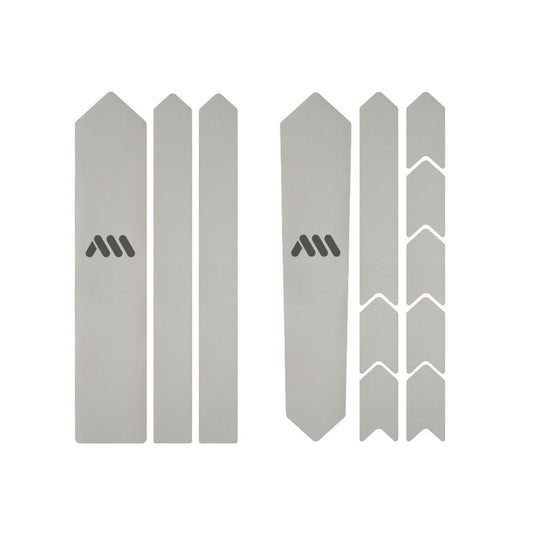
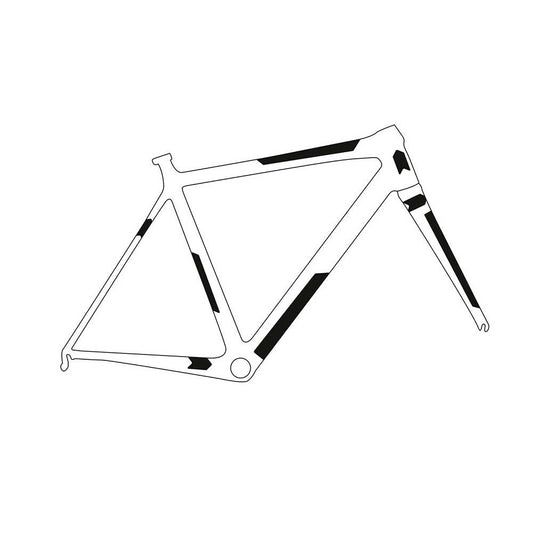
Adhesive Frame Protector ALL MOUNTAIN STYLE EXTRA Gravel/ Road Silver/Transparent
Regular price 39,99 €Regular priceUnit price per -
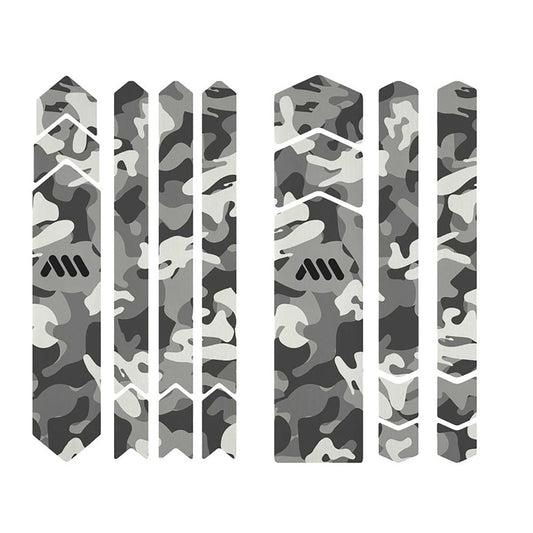
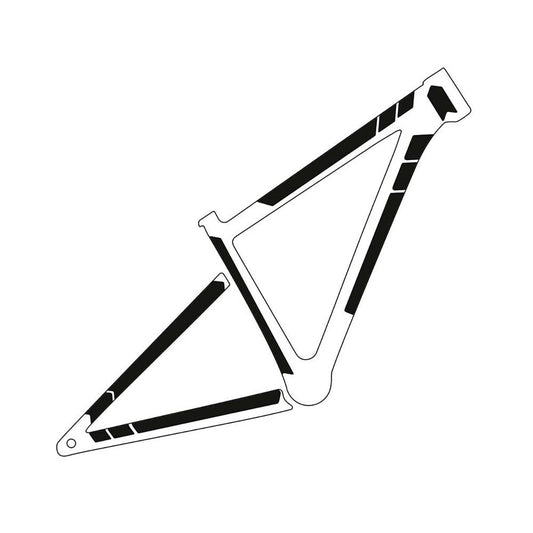
ALL MOUNTAIN STYLE FULL Camo Adhesive Frame Protector
Regular price 54,99 €Regular priceUnit price per -
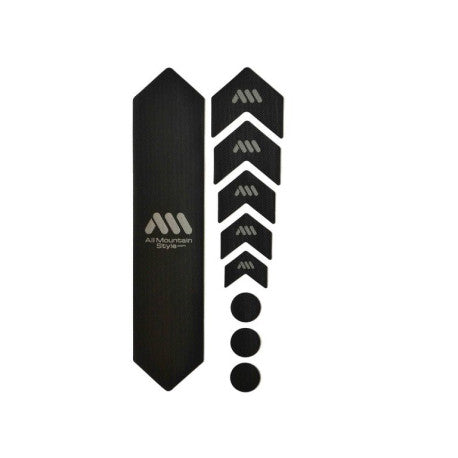

Adhesive Frame Protector ALL MOUNTAIN STYLE BASIC Black
Regular price 22,99 €Regular priceUnit price per -

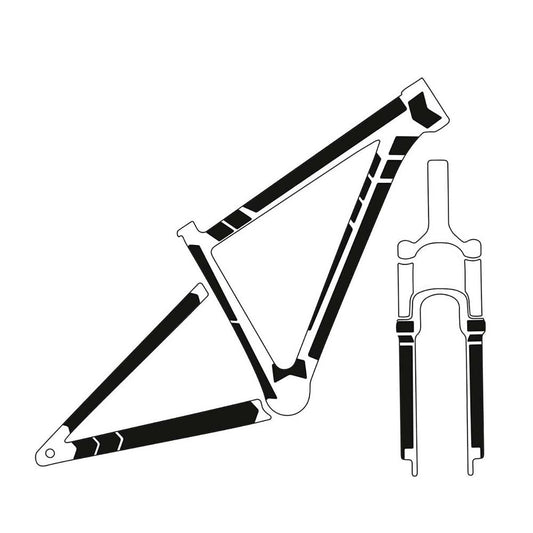
Frame Protector ALL MOUNTAIN STYLE TOTAL Transparent
Regular price 71,99 €Regular priceUnit price per -
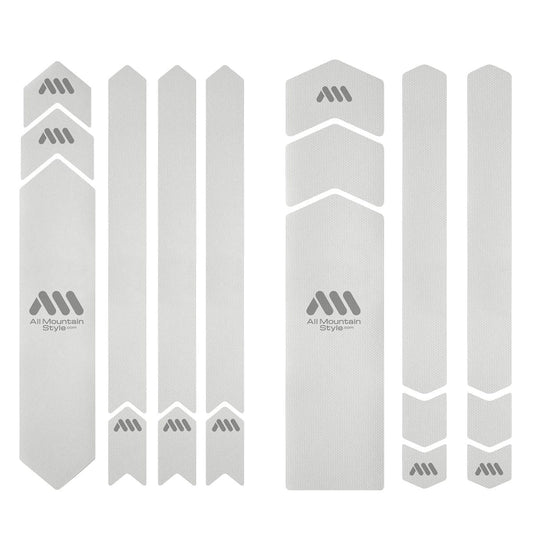
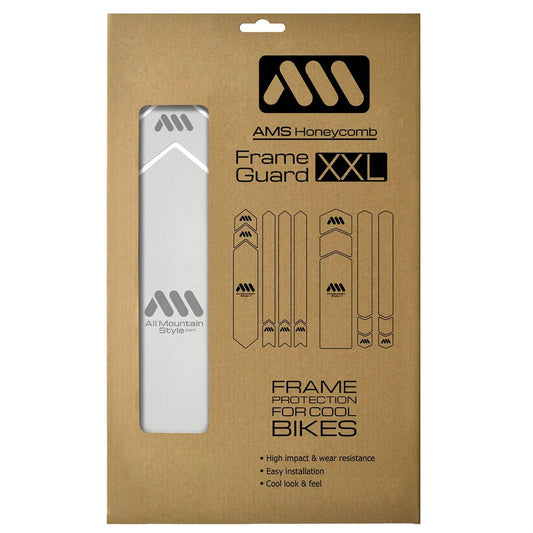
ALL MOUNTAIN STYLE FULL Transparent Adhesive Frame Protector
Regular price 47,99 €Regular priceUnit price per -
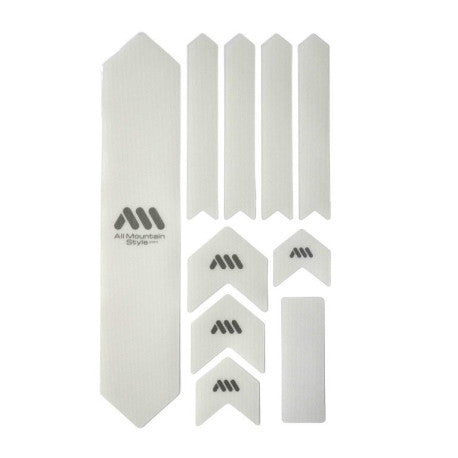
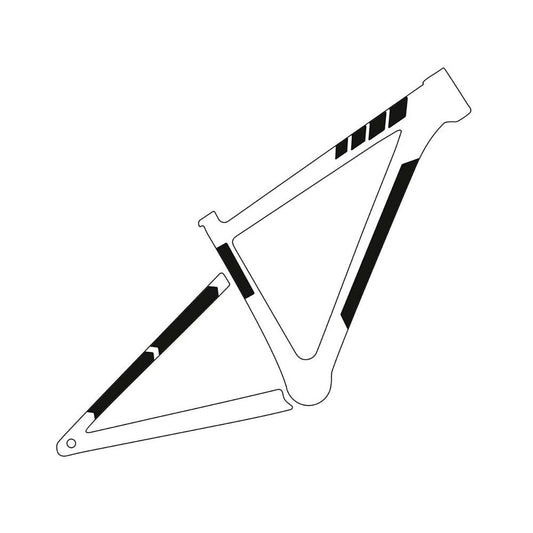
ALL MOUNTAIN STYLE EXTRA Transparent Adhesive Frame Protector
Regular price 29,99 €Regular priceUnit price per -
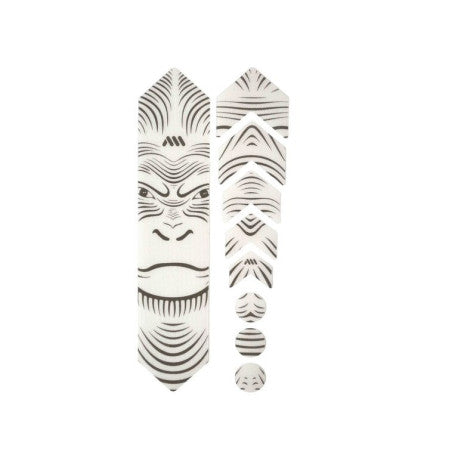
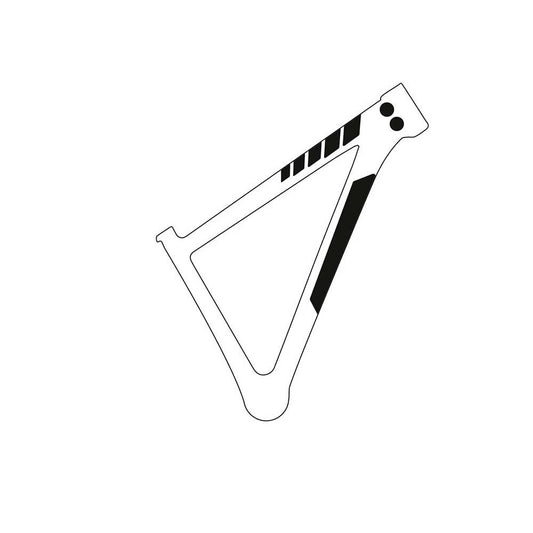
ALL MOUNTAIN STYLE BASIC Frame Protector White Ape
Regular price 27,99 €Regular priceUnit price per
